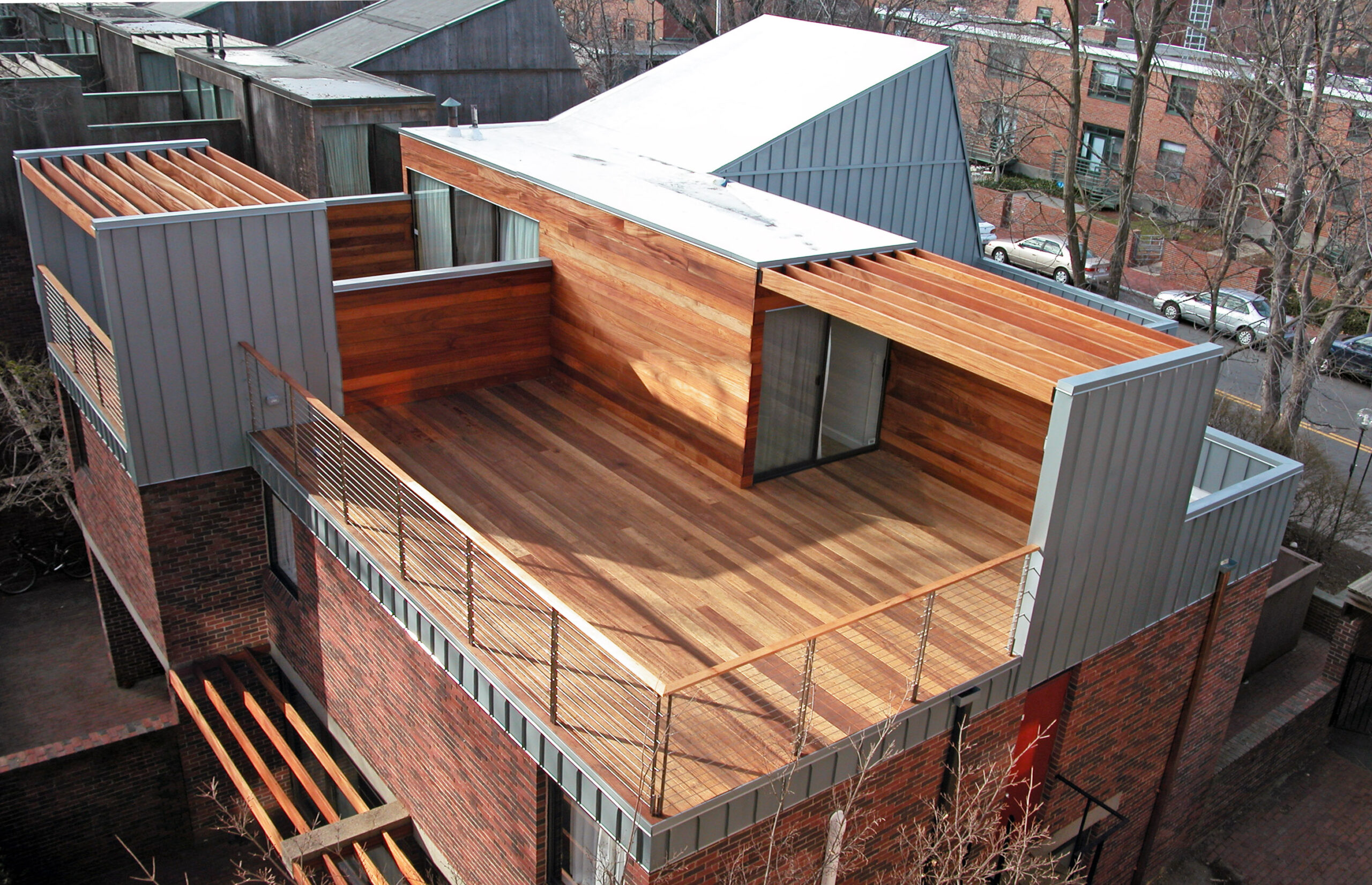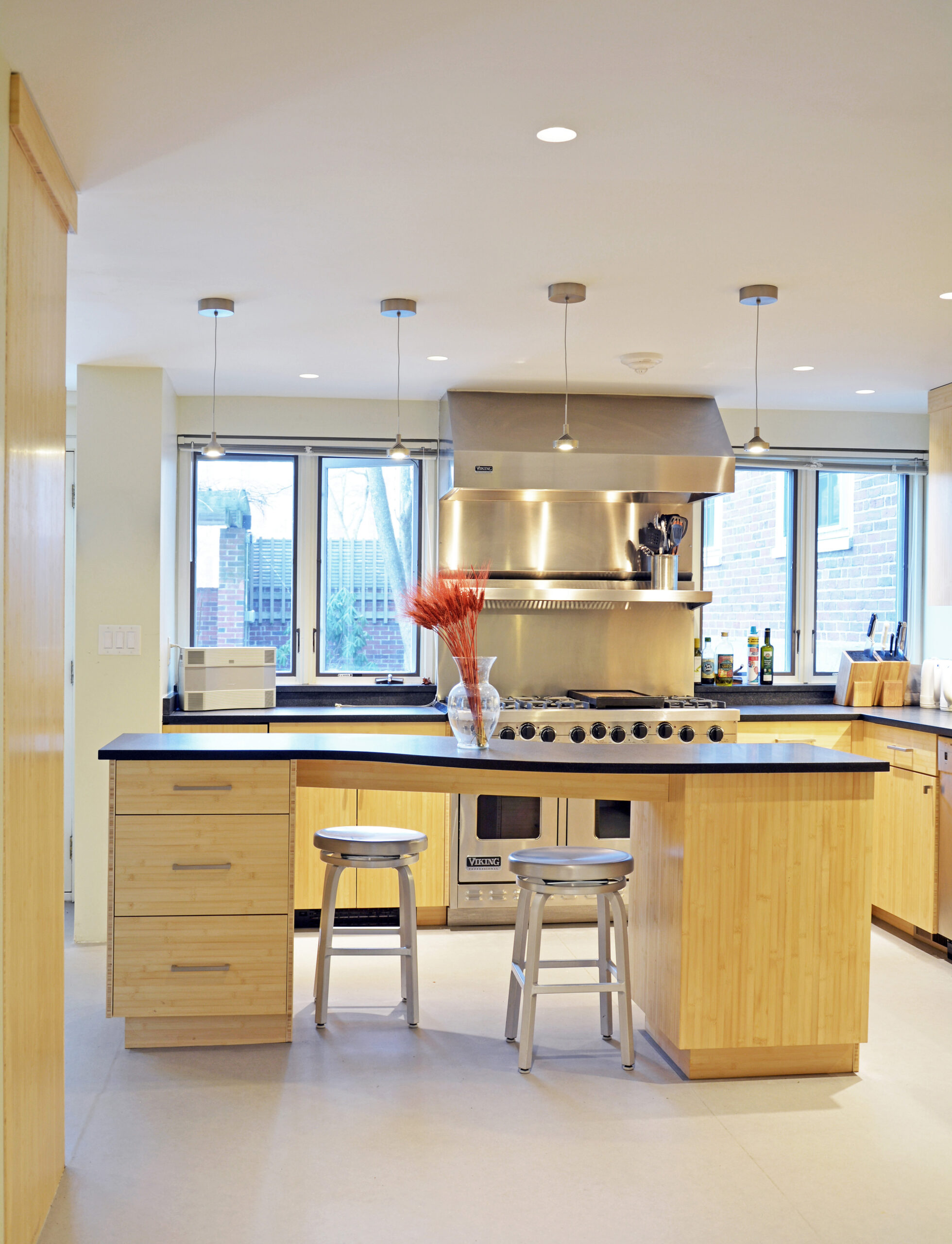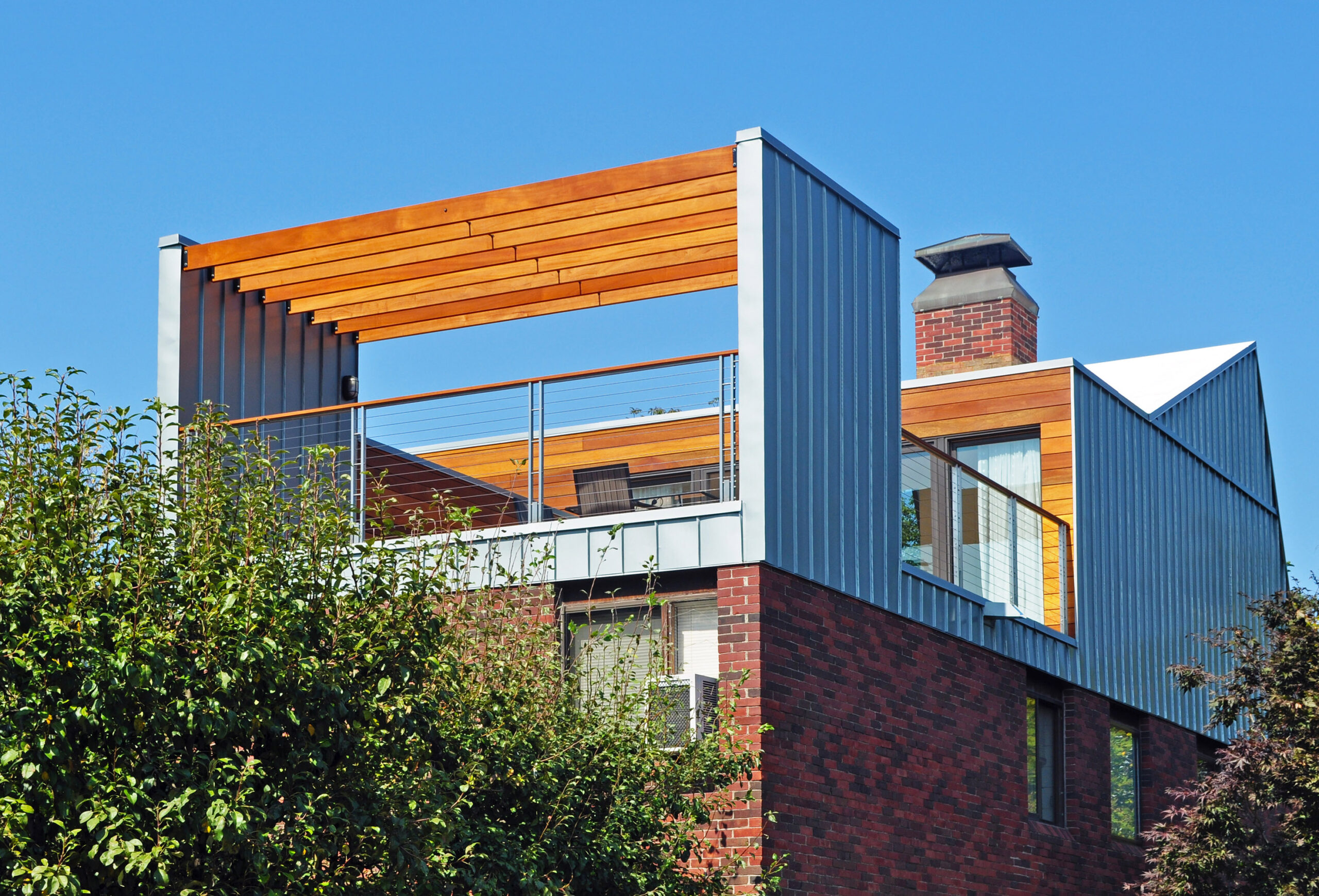Faculty Row
Harvard University
Description
When first completed in 1972 from a design by Ronald Gourley, these eight interlocked Faculty Housing units and the accompanying House Master’s Residence won an AIA award for their unique spatial complexity. They were noted for balancing standard units of construction with volumetric interplay, all while bringing natural light into living spaces. Another strength of the original design was its rectilinear and symmetrical arrangement of internal and external spaces, but the difference between the two had become blurred over the decades.
By the early 2000s they were showing signs of age. Plywood siding was delaminating, wooden decks splintering, custom windows failing. The opportunity to reinvent a piece of midcentury modernism presented itself when two of the eight alternating rooftop designs were to be rebuilt as prototypes for the remainder of the complex.
Working with project management for the Faculty of Arts & Sciences, we prepared one prototype design to bring the buildings into the 21st century. New zinc siding, mahogany decking, cedar decks and trellises, and stainless steel railings accentuate the defining elements and more clearly articulate the living spaces, breathing new life into the building and reinvigorating the surrounding campus. New insulated skylights reduce the heat gain while allowing natural light to pour in. The renovation was also a chance to bring the structure up to modern energy standards and help meet Harvard’s lofty environmental goals. Harvard’s energy standards brought an uncharacteristic level of environmental care to this building. Insulation within the ceilings was more than tripled, following the Stretch Energy Code. Black roofs were exchanged for well-insulated white TPO roof membranes to reduce the heat island effect, so now the roof structures are triple insulated, allowing separation of interior from exterior in the most thermally efficient manner.
Construction waste was minimized by recasting the siding as sheathing, and materials were selected for not only aesthetics but also longevity and ability to be recycled. FSC-certified wood was used for decks and trellises, in addition to 100% recycled Rheinzink siding, a “200 year material,” according to the manufacturer. The prototype was executed in 2012, to great approval and result. In 2013, a few more units were done. In 2014, the “House Masters” unit was done, with the remaining four units planned for future budgets.




